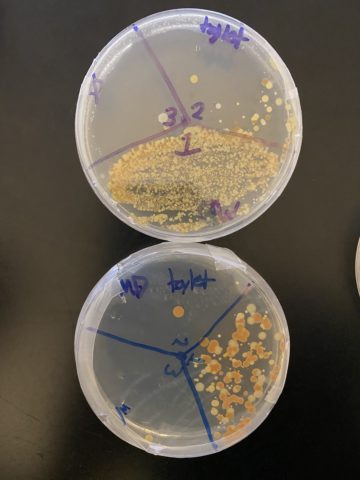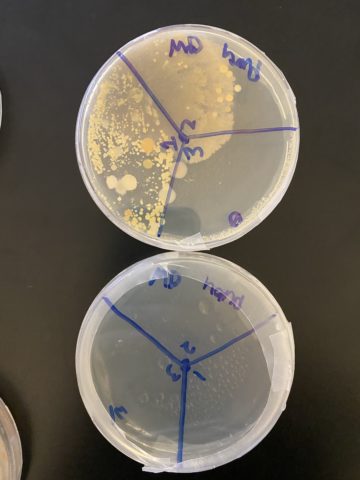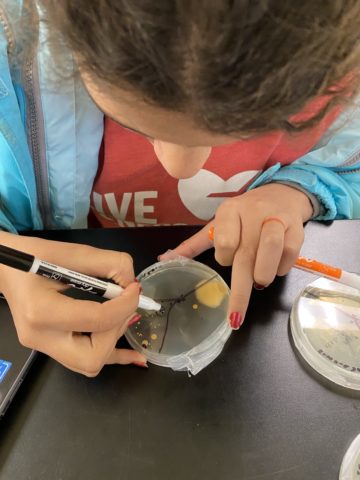What was your driving question?
Grades Involved
9th through 12th
How did this project connect to your local or regional community?
This project was relevant to our local place because it focused on our immediate place, the school. Students were able to conduct experiments on the places within our school that are the dirtiest.
What PBE principles were highlighted in this project?
Learner-Centered, Design Thinking, Inquiry Based
Project Description
Students worked to better understand the places in our school that have the most bacteria on them, and which disinfectant/sanitizer is the most effective at killing bacteria. Students picked locations in the school after doing some base research about which places in houses and public spaces are the dirtiest (primary scientific research). They then collected ubiquitous bacteria swabs from their locations and used agar plates to streak bacteria cultures. We then grew them in a modified incubator for a week. Then students measured bacteria growth by counting the number of bacteria colonies and the size of the largest colony.

How did this positively impact the community? How was it shared?
This project positively impacted the community because students were able to take what they learned and apply it to their lives, and share it at home with their families. The things they learned were the effectiveness of various cleaning methods.
Reflection: What was the biggest challenge? What was the most rewarding aspect of this project?
The biggest challenge of this project was time restraints. Students felt rushed in the last week to collect data (count colonies, measure size), analyze the data, and create their project presentations. This was mostly due to having to wait for the agar plates to arrive (supply chain issues).
Any advice for a teacher or student that is implementing a PBE project for the first time?
Order materials well enough in advance that you are not waiting on them, or modify your plan. Having students watch a video on proper plate streaking procedures will help ensure they do not contaminate their samples. Lastly, order extra agar plates to students can practice streaking. This can be difficult at first because agar is very fragile and easily ripped. Allowing students a “practice plate” will help prevent rips in their actual bacteria culture plates.



